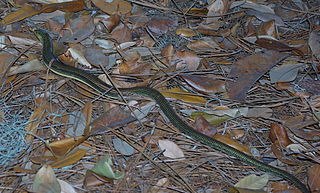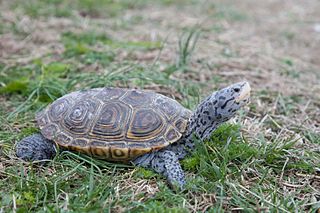Sycamore is a name which has been applied to several types of trees, but with somewhat similar leaf forms. The name derives from the ancient Greek συκόμορος (sūkomoros) meaning "fig-mulberry".

Struthionidae is a family of flightless birds, containing the extant ostriches and their extinct relatives. The two extant species of ostrich are the common ostrich and Somali ostrich, both in the genus Struthio, which also contains several species known from Holocene fossils such as the Asian ostrich. The common ostrich is the more widespread of the two living species, and is the largest living bird species. The extinct genus Pachystruthio from the Late Pliocene-Early Pleistocene of Eurasia is one of the largest birds ever.
Cypress is a common name for various coniferous trees or shrubs of northern temperate regions that belong to the family Cupressaceae. The word cypress is derived from Old French cipres, which was imported from Latin cypressus, the latinisation of the Greek κυπάρισσος (kyparissos). Cypress trees are a large classification of conifers, encompassing the trees and shrubs from the cypress family (Cupressaceae) and many others with the word “cypress” in their common name. Many cypress trees have needle-like, evergreen foliage and acorn-like seed cones.

Anguidae refers to a large and diverse family of lizards native to the Northern Hemisphere. Common characteristics of this group include a reduced supratemporal arch, striations on the medial faces of tooth crowns, osteoderms, and a lateral fold in the skin of most taxa. The group includes the slowworms, glass lizards, and alligator lizards, among others. The family is divided into two subfamilies, and contains about 87 species in 8 genera.

Ophisaurus is a genus of superficially snake-like lizards in the family Anguidae.

Berberis, commonly known as barberry, is a large genus of deciduous and evergreen shrubs from 1–5 m (3.3–16.4 ft) tall, found throughout temperate and subtropical regions of the world. Species diversity is greatest in South America and Asia; Europe, Africa and North America have native species as well. The best-known Berberis species is the European barberry, Berberis vulgaris, which is common in Europe, North Africa, the Middle East, and central Asia, and has been widely introduced in North America. Many of the species have spines on the shoots and all along the margins of the leaves.
Ground pine or ground-pine may refer to:
Lizard's tail may refer to any of the following plants:
Horned frog is a common name used to identify several kinds of frogs with hornlike features:

Polecat is a common name for several mustelid species in the order Carnivora and subfamilies Ictonychinae and Mustelinae. Polecats do not form a single taxonomic rank. The name is applied to several species with broad similarities to European polecats, the only polecat species native to the British Isles, such as having a dark mask-like marking across the face.
Water celery is a common name for several plants and may refer to:

Koelliker's glass lizard, also called commonly the Moroccan glass lizard, is a species of lizard in the family Anguidae. The species is native to western North Africa.

Terrapins are one of several small species of turtle living in fresh or brackish water. Terrapins do not form a taxonomic unit and may not be closely related. Many belong to the families Geoemydidae and Emydidae.

A newt is a salamander in the subfamily Pleurodelinae. The terrestrial juvenile phase is called an eft. Unlike other members of the family Salamandridae, newts are semiaquatic, alternating between aquatic and terrestrial habitats. Not all aquatic salamanders are considered newts, however. More than 100 known species of newts are found in North America, Europe, North Africa and Asia. Newts metamorphose through three distinct developmental life stages: aquatic larva, terrestrial juvenile (eft), and adult. Adult newts have lizard-like bodies and return to the water every year to breed, otherwise living in humid, cover-rich land habitats.
Palustris is a Latin word meaning "swampy" or "marshy", and may refer to:
M. giganteus may refer to:
Herring gull is a common name for several birds in the genus Larus, all formerly treated as a single species.

Princess pine may refer to:
Wood violet is a common name for several plants and may refer to:
Water parsley is a common name for several species of plants and may refer to:









